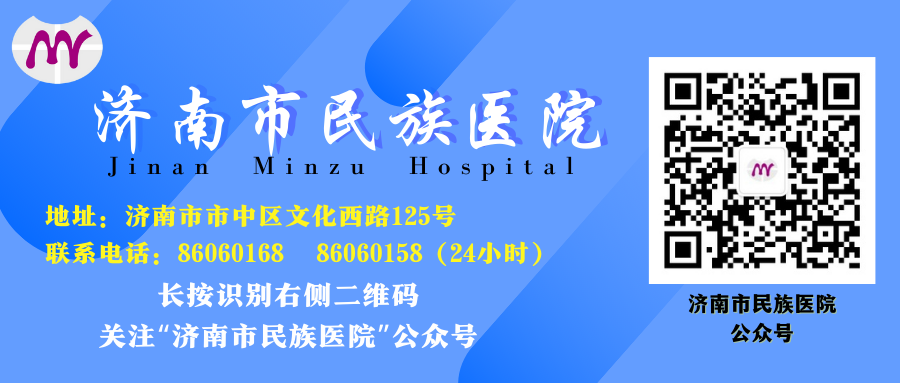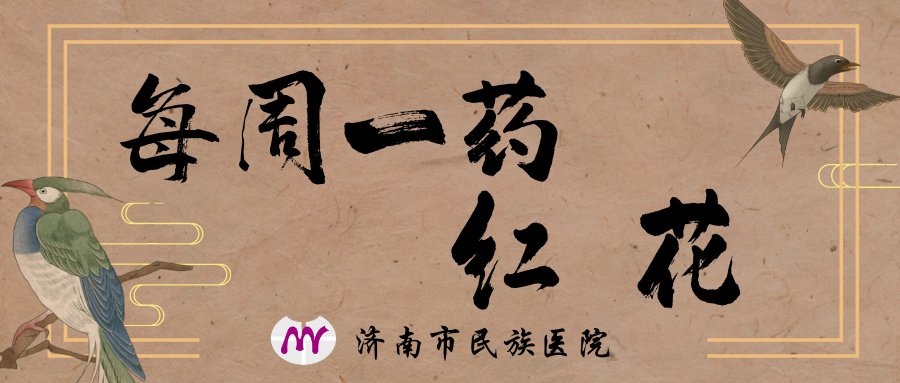
 Source
Source
Safflower (Honghua) is the dried flower of the Asteraceae plant. It is cultivated in various regions across the country, primarily produced in Henan, Hubei, Sichuan, Yunnan, and Zhejiang. The flowers are harvested in summer when they change from yellow to red, and then dried in the shade or under sunlight. Care should be taken to avoid damaging the base ovary while removing impurities, and the best quality is achieved when the flowers are soft and deep red. (Harvesting should be done early in the morning when the dew has not dried and the bracts are soft, but not too early.)
 Identification
Identification
The flower is a tubular flower without an ovary, measuring 1-2 cm in length. The surface is reddish-yellow or red. The corolla tube is elongated, with five lobes at the tip, and the lobes are narrow and 5-8 mm long; there are five stamens, and the anthers are tubular and yellowish-white; the stigma is long and cylindrical with a slightly bifurcated tip. The texture is soft, with a faint fragrance and a slightly bitter taste.
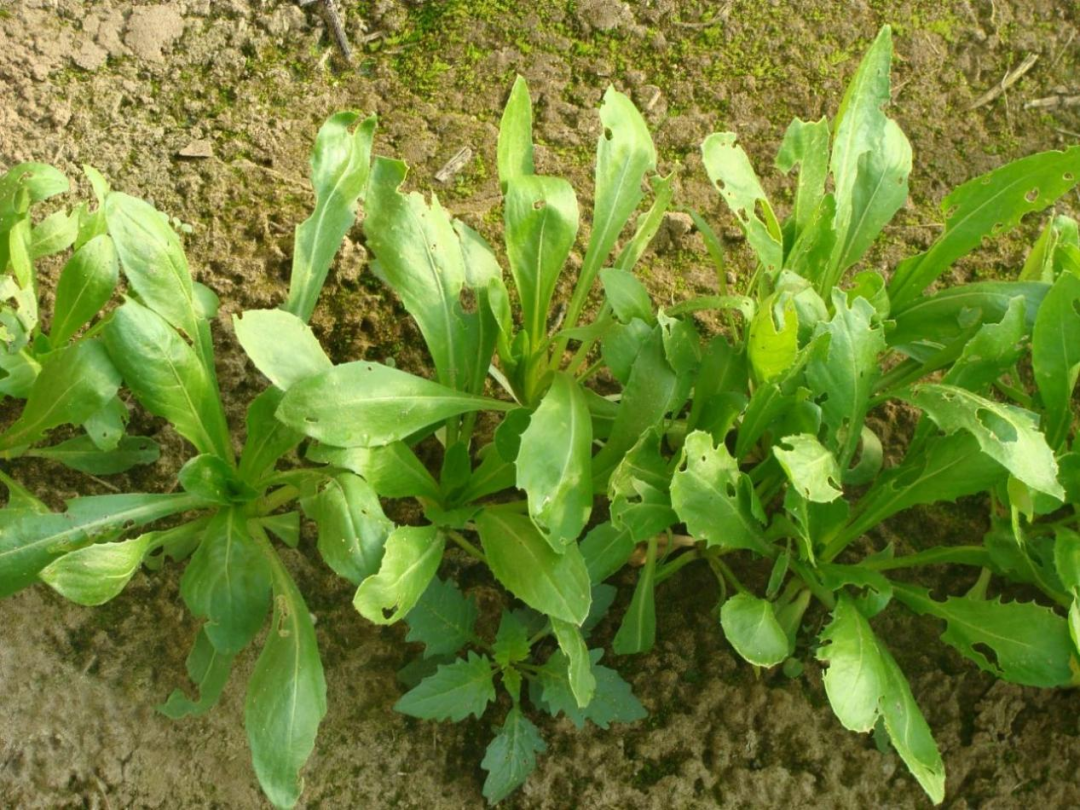
 Properties and Channels
Properties and Channels
Spicy, warm. Enters the Heart and Liver meridians.

Functions and Indications
Invigorates blood circulation, regulates menstruation, disperses blood stasis, and alleviates pain. Used for amenorrhea, dysmenorrhea, retained lochia, abdominal masses, chest pain, abdominal pain due to blood stasis, stabbing pain in the chest and hypochondrium, trauma, and swelling and pain from sores.

Clinical Applications and Combinations
1. Safflower combined with Chai Hu (Bupleurum): Safflower disperses and warms, invigorates blood circulation, and alleviates pain; Chai Hu is aromatic and disperses, soothes the liver, regulates qi, and relieves stagnation. The combination of these two herbs harmonizes qi and blood, effectively promoting qi circulation and blood flow to relieve pain. Suitable for chest and hypochondriac pain due to blood stasis and qi stagnation, irregular menstruation, and trauma-related swelling and pain.
2. Safflower combined with Rou Gui (Cinnamon): Safflower invigorates blood circulation and alleviates pain; Rou Gui warms and assists yang, disperses cold, and alleviates pain. The combination of these two herbs is effective in warming yang, dispersing cold, and invigorating blood circulation to relieve pain. Suitable for amenorrhea, dysmenorrhea, postpartum abdominal pain due to blood stasis, chest pain, and lower abdominal pain due to cold stagnation.
3. Safflower combined with Zi Cao (Lithospermum): Safflower invigorates blood circulation to resolve stagnation and eliminate spots; Zi Cao clears heat and cools the blood to dispel rashes and eliminate spots. The combination of these two herbs is effective in clearing heat, cooling the blood, and resolving stagnation to eliminate spots. Suitable for rashes with dark colors due to heat and blood stasis.
4. Safflower combined with Mo Yao (Myrrh): Safflower excels in invigorating blood circulation; Mo Yao excels in alleviating pain. The combination of these two herbs enhances the effects of invigorating blood circulation and alleviating pain. Suitable for abdominal pain and amenorrhea due to blood stasis.
5. Safflower combined with Su Mu (Sappan Wood): Safflower disperses and warms, effectively invigorating blood circulation and alleviating pain; Su Mu is sweet, salty, and neutral, and can invigorate blood circulation. The combination of these two herbs works to promote blood flow and eliminate stasis, facilitating the expulsion of retained placenta. Used for women who are weak, with low blood volume and dry fluids, and retained placenta in the lower abdomen.
6. Safflower combined with He Ye (Lotus Leaf): Safflower promotes blood circulation and eliminates stasis, while He Ye raises yang and disperses stasis. The combination of these two herbs works together to promote blood flow and regulate qi, allowing for the expulsion of stagnant blood and the elevation of clear yang. Used for postpartum blood stasis, restlessness, and shortness of breath.
7. Safflower combined with Tao Ren (Peach Kernel): Both herbs invigorate blood circulation, eliminate stasis, and promote regeneration. Safflower is warmer and more effective in alleviating pain than Tao Ren, while Tao Ren is bitter and excels in breaking stasis. The combination of these two herbs can invigorate blood circulation, eliminate stasis, and alleviate pain, treating amenorrhea, abdominal pain due to blood stasis, and various stasis-related swellings and pains.
8. Safflower combined with Chuan Xiong (Ligusticum): Both herbs can invigorate blood circulation. Safflower can eliminate stasis and regulate menstruation, while Chuan Xiong is good at promoting blood circulation and alleviating pain. The combination of these two herbs is particularly effective in invigorating blood circulation and eliminating stasis, commonly used for amenorrhea and systemic pain due to blood stasis.
9. Safflower and Peach Kernel Porridge: 10-15 grams of Peach Kernel, 6-10 grams of Safflower, and 50-100 grams of glutinous rice. First, crush the Peach Kernel into a paste, and then decoct it with Safflower. Strain the residue and cook with glutinous rice to make a thin porridge, adding brown sugar for flavor. Take 1-2 times daily, warm. This porridge has the effects of invigorating blood circulation, regulating menstruation, and alleviating pain, suitable for qi stagnation, blood stasis, amenorrhea, irregular menstruation, coronary heart disease, angina, and hypertension.
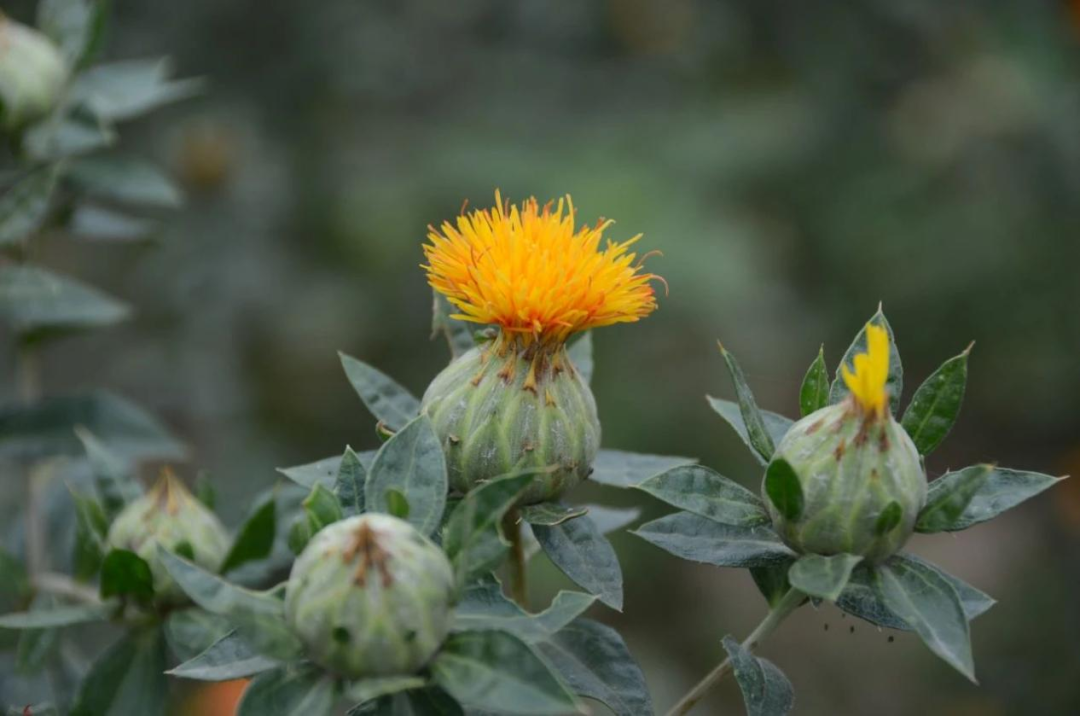
 Ethnic Medicine
Ethnic Medicine
Mongolian Medicine
Mongolian medicine is known as: Gu Ri Gu Mu, also known as “E Bu Sen – Gu Ri Gu Mu”, “E Li Gen Nai Sai Yin”, “Hang Ga Ge Qi – Ulan”.
Properties: Sweet, slightly bitter, nature is original. Effects are soft, solid, blunt, and heavy.
Functions: Cools the blood, locks the vessels, regulates menstruation, clears the liver, strengthens the body, alleviates pain, and reduces swelling.
Indications: Liver heat, irregular menstruation, hematemesis, epistaxis, external bleeding, blood heat headache, heart heat, blood heat.
1. “Wuyuan Mong Medicine Appraisal”: Treats liver diseases, locks vessels, and stops bleeding.
2. “Guanzhe Zhi Xi”: Eliminates new and old liver heat, locks vessels, strengthens the body, and nourishes blood.
Dosage: Decoction of 3-5 grams; or in pills or powders.
1. Liver Decoction: Treats liver area pain, liver enlargement, liver blood stasis, jaundice. Ingredients: 45 grams of Wu Ling Zhi, 30 grams of Mu Tong, 25 grams each of He Zi, Zhi Zi, Chuan Lian Zi, Qu Mai, and Safflower, and 15 grams of bear bile. Prepare as a decoction. Take 3-5 grams each time, 1-3 times daily, decocted in water. “Guanzhe Zhi Xi”
2. Seven Flavor Safflower Heart Clearing Powder: Treats heart heat, palpitations, and stabbing pain in the heart. Ingredients: 30 grams each of Safflower and Shi Gao, 10 grams of Niu Huang, and 50 grams each of Rou Dou Kou, Chen Xiang, Guang Jiao, and Mu Xiang. Prepare as a powder. Take 1.5-3 grams each time, 1-3 times daily, with warm water. “Hou Xu Yi Dian”
3. Liu Rui Pill: Treats headache due to Yang deficiency, red and swollen eyes, and migraine. Ingredients: 15 grams of He Zi, 7.5 grams of Mu Xiang, 15 grams of Safflower, 7.5 grams of Hei Yun Xiang, and 7.5 grams of She Xiang. Prepare as water pills. Take 1.5-3 grams each time, 1-2 times daily, with warm water after meals. “Mong Medicine Selection”
4. Hemostatic Powder: Treats hematemesis, epistaxis, bleeding wounds, hematuria, excessive menstruation, and blood in stool. Ingredients: 15 grams of Safflower, 2.5 grams of bear bile, 1 gram of Zhi Zi, and 0.5 grams each of Yin Zhu, Wu Ling Zhi, and Gan Cao. Prepare as a powder. Take 1.5-3 grams each time, 2-3 times daily, with warm water. “Mong Medicine Formulary”
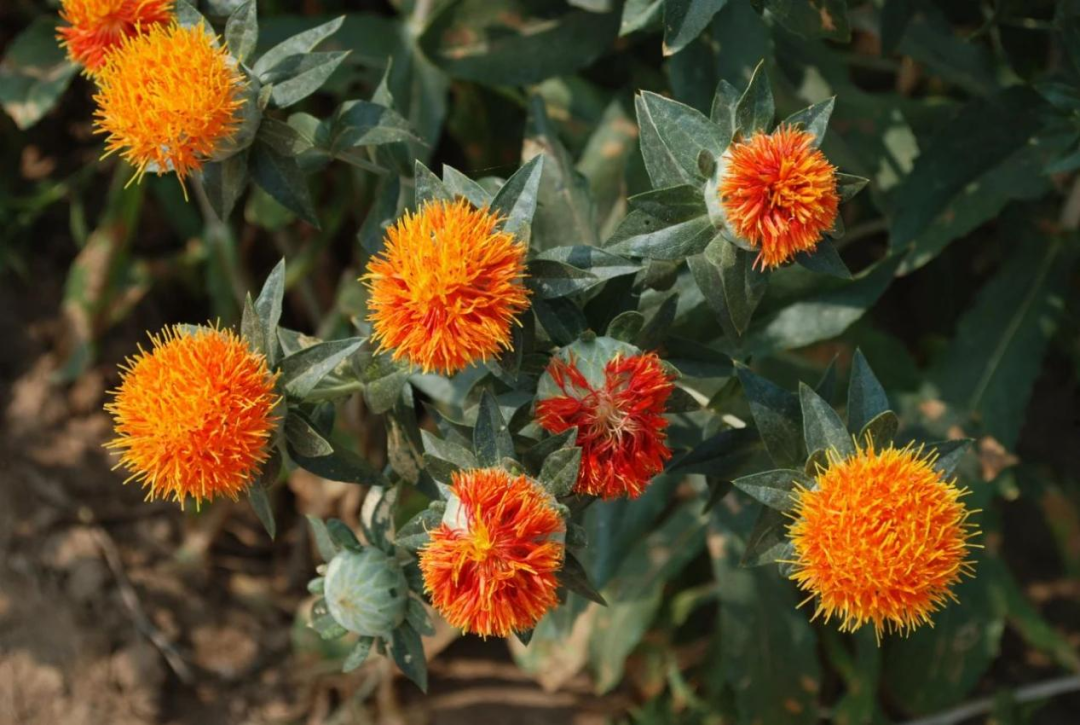

Wei Medicine
Wei medicine is known as: Za Rang Za Qie Qi Ke, also known as “Zai He Ru Li Ku Ri Tu Mi”, “Gu Li Mu Ai Si Pai Er” (from “Bai Di Yi Medicine Book”).
Properties: Secondary dry heat.
Functions: Generates dry heat, invigorates blood circulation, matures abnormal mucus, promotes diuresis, nourishes blood and strengthens yang, alleviates cough and wheezing, brightens blood heat, and constricts and eliminates rashes.
Indications: Diseases of damp-cold or mucous nature, such as irregular menstruation, difficulty urinating, low sperm count, cough with excessive phlegm, shortness of breath and wheezing, vitiligo, leukoplakia, and eczema.
1. “White Palace”: Disperses pathogenic substances, dispels wind and qi. Treats increased pathogenic substances in the body and qi stagnation.
2. “Bai Di Yi Medicine Book”: Dispels spots and brightens, dries dampness and eliminates ringworm, reduces inflammation and swelling. Treats facial dark spots, eczema, inflammation, and oral ulcers in children.
3. “Garden of Medicinal Herbs”: Nourishes and strengthens the body, nourishes blood and brightens. Treats elderly weakness and pale complexion.
Dosage: Internal use: 5-7 grams. External use: appropriate amount. Can be used in decoctions, honey pastes, syrups, powders, oils, washes, etc.
Precautions: This product is harmful to blood diseases and throat diseases, and may cause headaches. Corrective herbs include fennel and honey.
Substitutes: If this product is out of stock, Zuguo Ru Li Mi Li can be used as a substitute.
1. For treating facial dark spots, eczema, and inflammation: Take an appropriate amount of Safflower, grind it into fine powder, and mix with an appropriate amount of grape vinegar to make a poultice, applying it to the affected area. “Bai Di Yi Medicine Book”
2. For treating oral ulcers in children: Take an appropriate amount of Safflower, grind it into fine powder, and mix with an appropriate amount of honey to make a poultice, applying it to the affected area. “Bai Di Yi Medicine Book”
3. For treating elderly weakness and pale complexion: Take an appropriate amount of Safflower, decoct with warm fire, filter out the residue, and add an appropriate amount of brown sugar for internal use. “Garden of Medicinal Herbs”
4. Pashu Ye Zai He Ru Li Ku Ri Tu Mi Wash: Safflower, Yuxiang, Celery root, Daji, Chamomile, Wild Alfalfa seeds, and Mountain Basil, each 30 grams; 10 grams of Colchicum; 10 grams each of sweet almond oil and rose oil. Soak the herbs in 6000 ml of water, simmer until reduced to 5000 ml, and filter out the residue. Functions to reduce inflammation and alleviate pain. Indicated for knee joint pain, shoulder joint pain, and hand joint pain. For external use, rinse the painful joint area while warm. “Medical Encyclopedia”

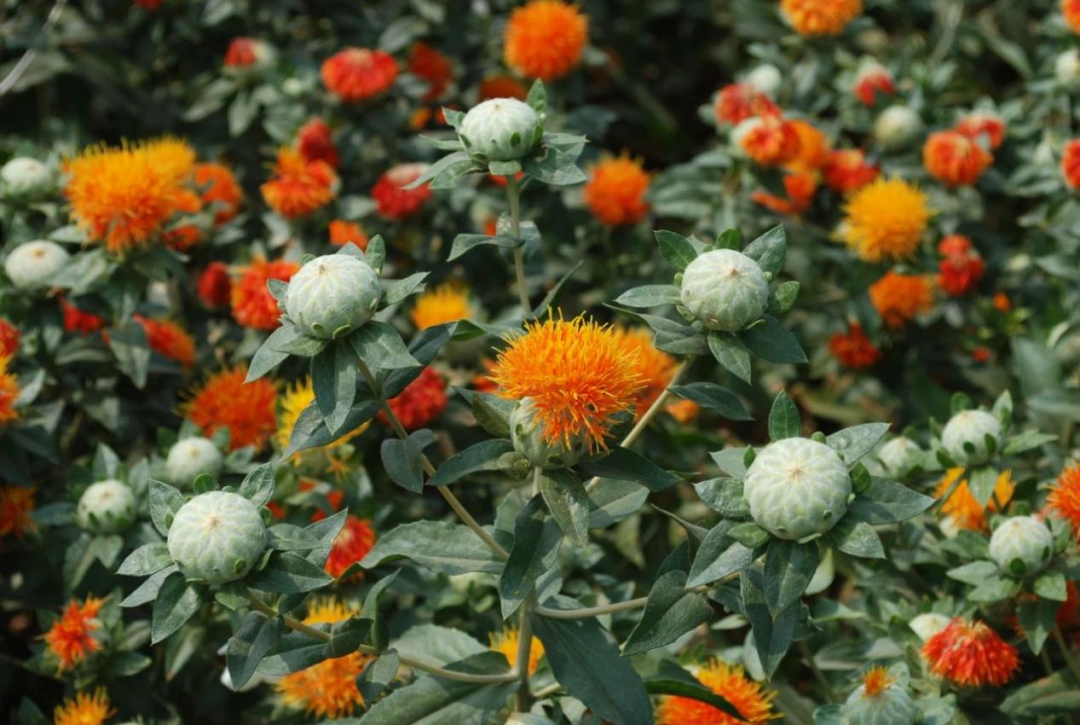

Dai Medicine
Dai medicine is known as: Luo Han.
Properties: Sweet, slightly fragrant, neutral. Enters the water and wind channels.
Functions: Promotes qi and blood circulation, relaxes muscles and bones, reduces swelling and alleviates pain.
Indications: “Zhuo Shang, Lu Ha” (trauma, fractures), “Er Gan, Long Zai Xian Zai Wei” (chest tightness, palpitations), “Na Le Mao Sha Me” (dysmenorrhea), “Ai Xi Huo” (cough and wheezing), “Long Niu Ha Zhan Bo” (painful urination, urinary stones).
Dosage: Internal use decoction, 5-10 grams.
1. For treating trauma, Lu Ha: 5 grams of Safflower, 10 grams of Su Mu, and 15 grams of Fish Egg Orchid root. Decoction for internal use. (Jinghong City famous Dai doctor Kang Lang Lun’s formula)
2. For treating trauma: 5 grams of Safflower, 15 grams of Su Mu, 10 grams of Ze Lan, and 5 grams of Xiang. Decoction for internal use. (Xishuangbanna Dai Hospital Dai doctor Kang Lang Xiang’s formula)
3. For treating Er Gan, Long Zai Xian Zai Wei: 5 grams of Safflower and 5 grams of Clove, decoct for internal use. (Xishuangbanna Dai Hospital Dai doctor Kang Lang Xiang’s formula)
4. For treating Na Le Mao Sha Me: 5 grams of Safflower, 20 grams of Yi Mu Cao, 20 grams of Small Tooth Cone Flower, and 20 grams of Old Crow Paste. Decoct for internal use. (Jinghong City famous Dai doctor Kang Lang Lun’s formula)
5. For treating Ai Xi Huo: 5 grams of Safflower. Decoct, add a little child’s urine as a guide, for internal use. (“Jinghong City famous Dai doctor Kang Lang Lun’s formula”)
6. For treating Long Niu Ha Zhan Bo: 5 grams of Safflower, 15 grams of Ai Gen, 15 grams of Ba Du San root, and 15 grams of Ze Lan root. Decoct for internal use. (Jinghong City Dai doctor Bo De’s formula)


 Classical Texts on Safflower
Classical Texts on Safflower
1. “Tang Ben Cao”: Treats locked jaws, blood clots, and various postpartum diseases.
2. “Kai Bao Ben Cao”: Primarily treats postpartum blood circulation issues, abdominal blood stasis, and pain, and can be taken with wine. Also treats toxic blood loss.
3. “Ben Cao Meng Quan”: Treats throat obstruction and choking, juice can be swallowed.
4. “Ben Cao Gang Mu”: Invigorates blood, moistens dryness, alleviates pain, disperses swelling, and regulates menstruation.
5. “Ben Cao Zheng”: Treats difficult eruptions of blood heat, disperses spots and rashes that do not resolve.
6. “Ben Cao Zai Xin”: Promotes diuresis and reduces swelling, stabilizes pregnancy, and expels dead fetuses.

Usage Precautions
Contraindicated for pregnant women and those with excessive menstruation.

Scan to Follow “Jinan Ethnic Hospital”
Author: Pharmacy Department Yu Hongye
Layout: Chen Yuxuan
Review: Zhang Peng
Chief Editor: Feng Cheng
